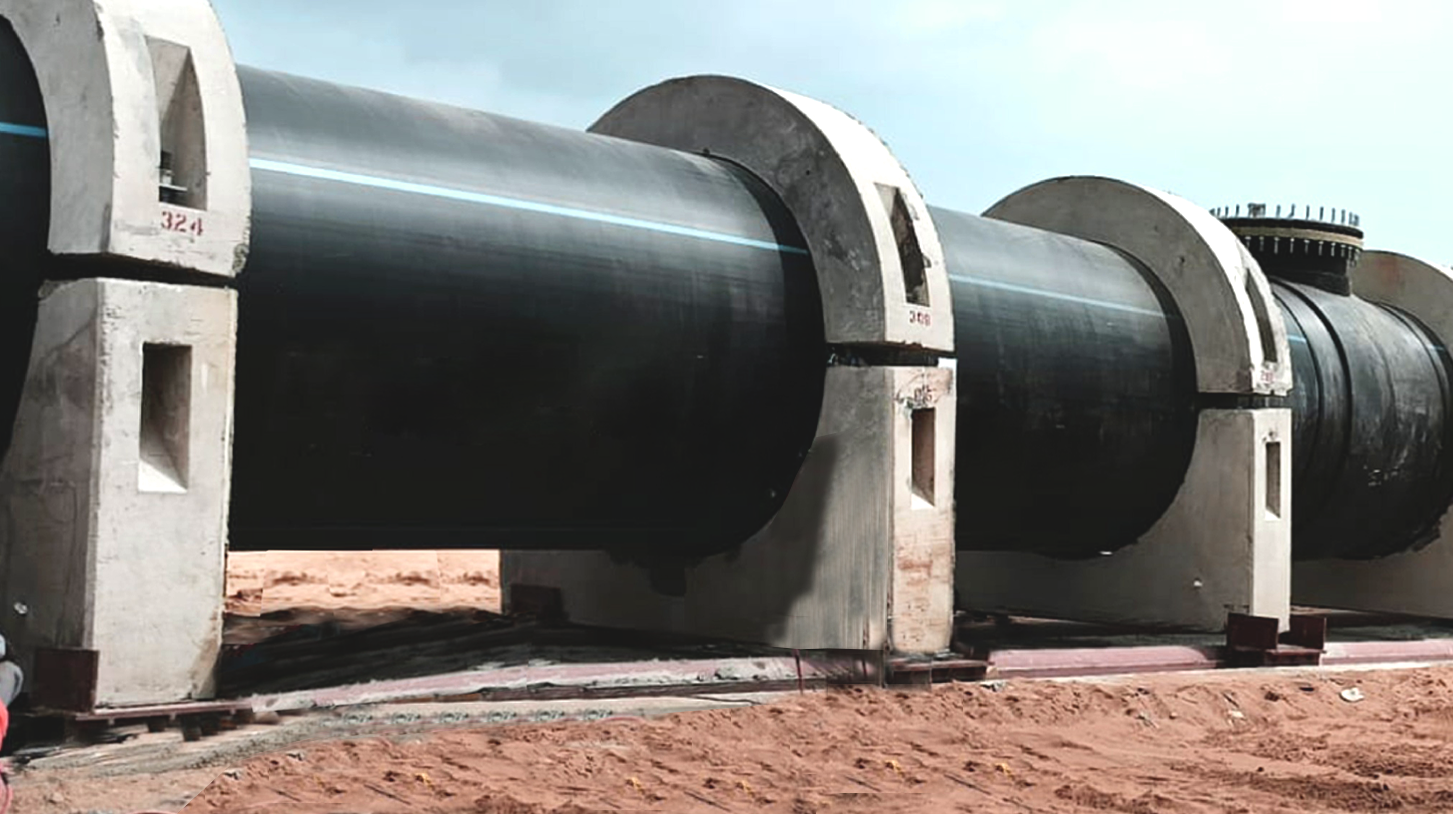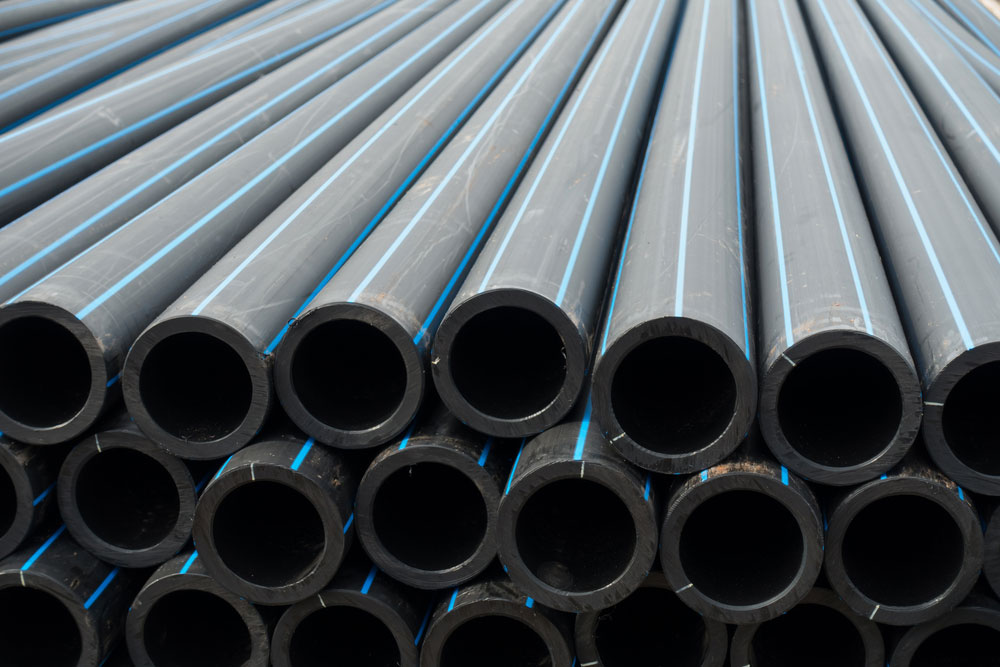The Role of Pipe Manufacturing Midland TX in Driving Local Projects
Wiki Article
Discover the Production Refine Behind High-Quality HDPE Pipeline and Its Applications
The manufacturing procedure of top quality HDPE pipelines is complex and systematic. It begins with the selection of basic materials that boost efficiency. Following this, ethylene undergoes polymerization to create resin, which is then formed with extrusion. Quality assurance is critical, making sure that the final item fulfills strict criteria. However, the trip of HDPE pipelines doesn't finish with production. Their applications throughout different sectors expose a broader relevance worth taking a look at.Understanding HDPE: Features and Advantages

High-density polyethylene (HDPE) is a flexible polycarbonate known for its toughness and resistance to various environmental variables. This product shows superb tensile strength, making it suitable for demanding applications. Its low-density structure adds to a lightweight product, helping with simplicity of handling and installation. HDPE additionally showcases remarkable resistance to chemicals, which reduces deterioration when exposed to severe substances.
The material's low wetness absorption better boosts its long life, making it ideal for use in pipelines and tank. Furthermore, HDPE is resistant to ultraviolet (UV) radiation, making certain that products preserve their honesty even when subjected to sunlight. In addition, its versatility enables the creation of complex shapes without compromising strength. The green nature of HDPE, typically originated from recycled products, contributes to its allure, advertising sustainable techniques in production. On the whole, these homes and advantages make HDPE a recommended selection for numerous industrial and customer applications.
Resources Selection for HDPE Production
The choice of raw products for HDPE production is vital to validate the last item meets the wanted requirements and high quality standards. High-density polyethylene (HDPE) is largely generated from polymerized ethylene, stemmed from fossil gas such as gas or petroleum. The high quality of these feedstocks considerably influences the mechanical and thermal residential properties of the final HDPE.Ingredients also play a significant function in boosting HDPE's efficiency, including anti-oxidants, UV stabilizers, and colorants, which improve toughness and resistance to environmental variables. The choice procedure should think about not only the chemical composition of the raw products however also their handling characteristics to ensure effective manufacturing.
Additionally, the sourcing of basic materials need to focus on sustainability and conformity with ecological guidelines, as accountable methods are imperative in today's market. Ultimately, careful raw material selection lays the structure for producing high-grade HDPE pipelines appropriate for diverse applications.
The Extrusion Process: Shaping HDPE Pipe
The extrusion process plays an essential duty in forming HDPE pipelines, beginning with careful product prep work techniques that guarantee excellent circulation and uniformity. Just as vital is the layout of the die, which straight influences the last measurements and surface area quality of the pipeline. Together, these aspects contribute significantly to the performance and high quality of HDPE pipe production.Product Preparation Methods
Reliable production of HDPE pipelines begins with meticulous product prep work techniques, particularly the extrusion procedure. Throughout this phase, high-density polyethylene material is very first dried to eliminate dampness, making certain perfect circulation qualities. The resin is then fed into the extruder, where it undergoes home heating and melting, changing right into a viscous state. This home heating procedure is carefully regulated to keep the material's stability and efficiency. The molten HDPE is forced with a die, forming it into a continuous pipe kind. Proper temperature level management throughout extrusion is vital, as it directly affects the material's residential properties and the end product top quality. When shaped, the HDPE pipe is cooled down and cut to defined lengths, ready for succeeding handling and applications.Die Layout Value
Precision in die layout plays an important duty in the extrusion procedure of HDPE pipelines. The die works as the final shaping device, straight influencing the pipeline's measurements, wall density, and surface area finish. A well-designed die assurances uniform material circulation, lowering flaws such as abnormalities and weak points. The geometry of the die have to be maximized to accommodate the specific residential or commercial properties of HDPE, including its viscosity and thermal behavior during extrusion. Furthermore, the cooling price of the material as it passes via the die can markedly affect the pipe's structural integrity. As a result, purchasing advanced die innovation is vital for producers intending to create top quality HDPE pipelines that satisfy sector criteria and customer assumptions.Quality Assurance Steps in HDPE Production
Different aspects influence the top quality of HDPE pipe production, reliable top quality control actions are important to assure uniformity and reliability in the last product (Pipe Manufacturing Midland TX). Trick top quality control techniques include extensive material evaluation, verifying that the raw polyethylene meets recognized criteria for purity and density. During the extrusion process, specifications such as temperature, stress, and cooling time are carefully checked to preserve dimensional precision and architectural integrityFurthermore, post-production screening is necessary; makers commonly carry out hydrostatic examinations to evaluate the pipeline's toughness and resistance to pressure. Aesthetic evaluations for surface area problems further boost quality control. Certification from pertinent requirements companies, like ASTM or ISO, supplies an click to read more added layer of reliability. By executing these thorough quality assurance steps, suppliers can minimize flaws, enhance efficiency, and make certain that the HDPE pipelines satisfy the particular requirements of different applications, eventually leading to client complete satisfaction and rely on the item.
Applications of HDPE Pipe Across Industries
HDPE pipes are visit the site made use of throughout various fields because of their longevity and adaptability. In water circulation systems, they guarantee efficient distribution, while in wastewater management, they offer trusted solutions for waste transportation. Furthermore, agricultural irrigation networks take advantage of HDPE's resistance to corrosion and versatility, making it a perfect option for modern-day farming practices.
Water Circulation Solutions
A significant variety of markets rely upon high-density polyethylene (HDPE) pipes for effective water circulation systems. Understood for their longevity and resistance to rust, HDPE pipes are widely made use of in municipal supply of water networks, farming watering, and industrial applications. Their lightweight nature facilitates simple handling and installation, decreasing labor prices and time. Furthermore, HDPE pipelines can fit numerous stress degrees, making them ideal for both low and high-pressure systems. hdpe pipe suppliers Midland TX. The versatility of the product permits smooth combination right into existing facilities, decreasing the demand for substantial excavation. HDPE's resistance to chemical seeping warranties that the water supplied remains secure and clean, making it a perfect choice for preserving the quality of potable water throughout different sectors.Wastewater Administration Solutions
Effective water circulation systems likewise lead the way for innovative wastewater management services, where high-density polyethylene (HDPE) pipes play a significant duty. Popular for their sturdiness and resistance to corrosion, HDPE pipelines are perfect for carrying wastewater in various settings. Their adaptability enables for very easy installation in complicated settings, reducing the need for comprehensive excavation. In addition, HDPE's smooth indoor surface area lowers friction, improving circulation rates and performance. These pipes are also resistant to chemical leaching, ensuring that impurities do not endanger the surrounding atmosphere. Industries, towns, and therapy facilities significantly depend on HDPE pipes for their dependability and long life, making them a recommended selection for contemporary wastewater administration systems. This versatility underscores the important value of HDPE pipes throughout numerous applications.Agricultural Irrigation Networks
Agricultural watering networks benefit significantly from using high-density polyethylene (HDPE) pipes, which supply reliable and trusted water delivery to crops. HDPE pipes are light-weight, making them very easy to transfer and set up, while their versatility enables for different arrangements in diverse surfaces. These pipelines show exceptional resistance to rust, chemicals, and UV radiation, making certain resilience in severe farming environments. Furthermore, their smooth indoor surface area lessens rubbing loss, optimizing water circulation and lowering power prices related to pumping. The longevity of HDPE pipelines, often exceeding 50 years, adds to decrease maintenance and replacement expenditures. Subsequently, farmers significantly rely on HDPE pipes to improve irrigation performance and promote lasting agricultural practices, inevitably causing boosted learn the facts here now plant yields and resource conservation.Future Patterns in HDPE Pipe Modern Technology
As the demand for sustainable and efficient infrastructure grows, advancements in HDPE pipeline modern technology are poised to transform various markets. Emerging trends include the integration of smart innovations, such as sensing units and IoT capabilities, which facilitate real-time surveillance of pipe conditions, decreasing upkeep prices and protecting against leaks. In addition, the growth of sophisticated manufacturing methods, such as 3D printing, is enabling the manufacturing of facility, personalized pipe styles that cater to particular task needs.Moreover, the concentrate on recycling and circular economic climate methods is driving the development of HDPE pipes made from recycled products, improving sustainability. Improved jointing methods, such as electro-fusion and mechanical fittings, are additionally improving installment effectiveness and dependability. The expanding emphasis on ecological guidelines is pressing producers to adopt greener production procedures, guaranteeing that HDPE pipelines not just meet industry standards yet likewise foster an even more lasting future for facilities growth.
Frequently Asked Questions
Exactly How Does HDPE Contrast to Other Plastic Products?
HDPE outshines many other plastic products regarding sturdiness, chemical resistance, and adaptability. Its low thickness and high tensile toughness make it optimal for numerous applications, typically going beyond alternatives in both efficiency and longevity.What Are the Ecological Impacts of HDPE Manufacturing?
The environmental impacts of HDPE production include greenhouse gas discharges, energy intake, and possible air pollution from manufacturing procedures. Furthermore, incorrect disposal can cause soil and water contamination, elevating worries about long-lasting environmental impacts.Can HDPE Water Lines Be Reused?
Yes, HDPE pipes can be recycled. Lots of centers accept utilized HDPE for processing, changing it right into new products. This reusing adds to sustainability efforts, lowering plastic waste while saving resources and energy in the production cycle.What Is the Life-span of HDPE Piping?

Just How Do Temperature Variants Affect HDPE Pipeline Efficiency?
Temperature level variations substantially influence HDPE pipeline efficiency, affecting adaptability and toughness. Heats can bring about softening, while low temperature levels might cause brittleness, ultimately affecting the pipe's sturdiness and suitability for various applications in diverse environments.Report this wiki page